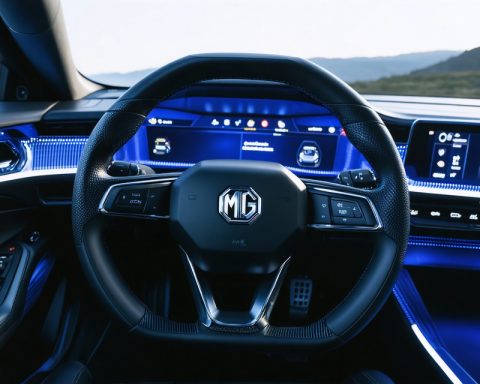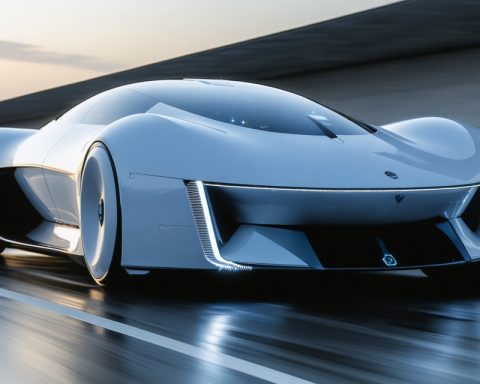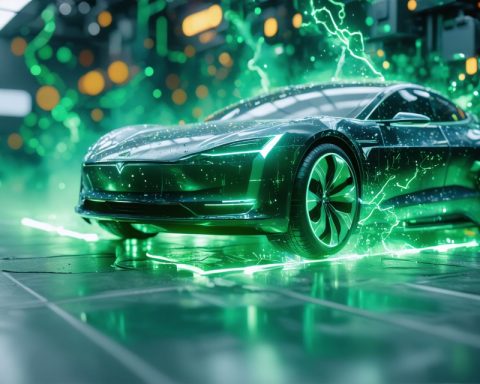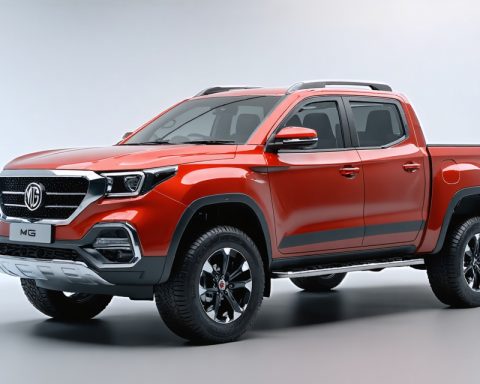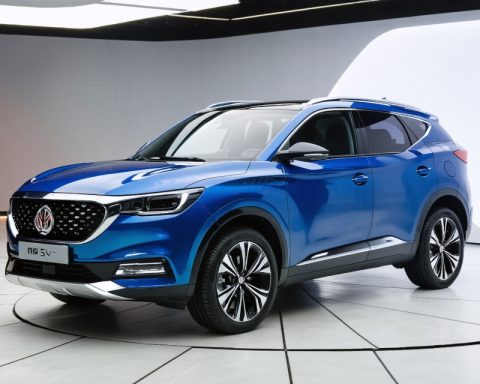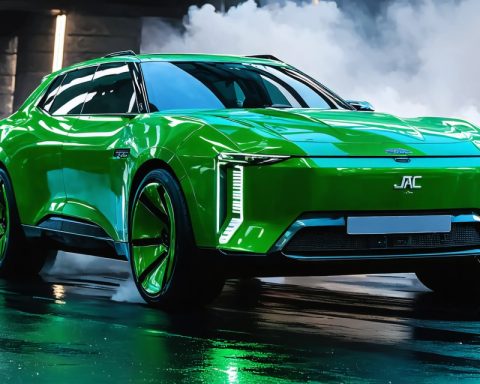- Electric Vehicles (EVs) are transforming urban landscapes, leading to cleaner, smarter, and quieter cities.
- EVs help reduce urban pollution by eliminating tailpipe emissions, contributing to better air quality and public health.
- Cities are adapting to EVs by redesigning infrastructure, expanding charging networks, and promoting sustainable urban mobility solutions like electric buses and ride-sharing.
- The economic benefits of EVs include lower operational costs, tax incentives, and job creation in various sectors.
- As costs decrease, EVs will become more accessible, driving a cultural shift towards sustainability.
- This transition represents a significant opportunity for urban transformation, offering improved air quality, reduced noise, and healthier city life.
- The growth of EVs symbolizes a future of sustainable and innovative urban development.
The streets of modern cities are undergoing a seismic shift, one that comes quietly but with monumental impact. Electric Vehicles (EVs) are reshaping our urban landscapes, offering a glimpse of what cleaner, smarter cities might look like in the near future.
Picture a bustling city street, previously choked with the noise and fumes of traditional combustion engines. Now, it hums softly with the smooth glide of electric cars. This transition marks not just a change in transportation but a pivotal environmental and cultural shift. Urban planners, environmentalists, and tech enthusiasts are taking note, recognizing the profound implications of this transition.
Enviro-Friendly Evolution
EVs stand at the forefront of reducing urban pollution. Traditional vehicles emit substantial amounts of carbon dioxide and toxic pollutants like nitrogen oxides. In contrast, EVs produce no tailpipe emissions. This contributes to cleaner air, improved health, and the reduction of city smog, a scourge of urban living for decades. Imagine cities where more people walk and cycle, no longer deterred by clouds of exhaust.
Redefining Urban Mobility
With the rise of electric vehicles, urban mobility is also transforming. Cities are redesigning their infrastructure to accommodate EVs, creating dedicated lanes, expanding charging networks, and encouraging ride-sharing programs. These adaptations not only benefit EV owners but also enhance the overall efficiency of urban travel.
Consider the iconic electric buses smoothly navigating city routes. They offer a serene commuting experience while significantly reducing noise pollution. It’s a contradiction to the cacophonous charm we’ve grown accustomed to yet utterly welcome. Charging stations, integrated with renewable energy sources, spring up in convenient locations, from office garages to supermarkets, marrying convenience with sustainability.
The Economic Upside
Beyond environmental benefits, the economic advantages of EV proliferation are noteworthy. Lower operational costs, tax incentives, and decreasing battery costs are making EVs more accessible to a broader audience. Furthermore, the burgeoning EV industry fuels job creation in manufacturing, software development, and infrastructure.
The Future Roadmap
As acquisition costs continue to fall, EVs will become an increasingly viable option for consumers across different economic strata. The electric vehicle market’s accelerating growth is not just setting new automotive standards—it’s encouraging a cultural shift towards sustainability.
Urban landscapes with vast EV fleets might soon become the norm, illustrating how technology can significantly change our interactions with the environment. This transformation promises cleaner air, reduced noise, and a healthier city life.
The silent revolution of electric vehicles is more than just an industry trend; it’s a profound opportunity for urban transformation. As we drive into this electrifying future, the journey is not just about the distance covered but about creating cities that mirror the sustainability and innovation reflected in the smooth, quiet passage of an electric car. Let’s lean into this change—it’s not just a road well-traveled but a path to a genuinely sustainable future.
In embracing electric vehicles, we charge forward to a cleaner, quieter, and more connected urban existence, demonstrating that progress is indeed silent, sometimes literally.
The takeaway? This is merely the beginning. The roads of tomorrow promise a profoundly different, and decidedly better, narrative than the ones we traverse today.
The Silent Revolution: Electric Vehicles Transforming Our Cities
The streets of modern cities are undergoing a seismic shift, one that comes quietly but with monumental impact. Electric Vehicles (EVs) are reshaping our urban landscapes, offering a glimpse of what cleaner, smarter cities might look like in the near future.
Picture a bustling city street, previously choked with the noise and fumes of traditional combustion engines. Now, it hums softly with the smooth glide of electric cars. This transition marks not just a change in transportation but a pivotal environmental and cultural shift. Urban planners, environmentalists, and tech enthusiasts are taking note, recognizing the profound implications of this transition.
The Impact of Electric Vehicles on Urban Development
Enviro-Friendly Evolution
EVs stand at the forefront of reducing urban pollution. Traditional vehicles emit substantial amounts of carbon dioxide and toxic pollutants like nitrogen oxides. In contrast, EVs produce no tailpipe emissions, contributing to cleaner air, improved health, and the reduction of city smog—a long-standing scourge of urban living. Imagine cities where more people walk and cycle, no longer deterred by clouds of exhaust.
Redefining Urban Mobility
With the rise of electric vehicles, urban mobility is also transforming. Cities are redesigning their infrastructure to accommodate EVs, creating dedicated lanes, expanding charging networks, and encouraging ride-sharing programs. These adaptations not only benefit EV owners but also enhance the overall efficiency of urban travel.
Consider the iconic electric buses smoothly navigating city routes. They offer a serene commuting experience while significantly reducing noise pollution. Charging stations, often integrated with renewable energy sources, are appearing in convenient locations, from office garages to supermarkets, blending convenience with sustainability.
The Economic Upside
Beyond their environmental benefits, the economic advantages of EV proliferation are noteworthy. Lower operational costs, tax incentives, and decreasing battery costs are making EVs more accessible to a broader audience. Furthermore, the burgeoning EV industry fuels job creation in manufacturing, software development, and infrastructure.
– Operational Costs: EVs are generally cheaper to fuel and maintain than their gasoline counterparts, which may lead to significant long-term savings.
– Tax Incentives: Many governments offer financial incentives to encourage EV adoption, including tax rebates and reduced registration fees.
– Job Creation: The growth of the EV industry necessitates new roles in areas such as battery production, software development, and the construction of charging infrastructure.
Future Roadmap and Industry Trends
As acquisition costs continue to drop, EVs will become a viable option for a wider range of consumers. The electric vehicle market’s accelerating growth is not just setting new automotive standards—it’s encouraging a cultural shift towards sustainability. Urban landscapes with vast EV fleets might soon become the norm, illustrating how technology can significantly change our interactions with the environment. This transformation promises cleaner air, reduced noise, and a healthier city life.
Industry Predictions
– Market Growth: The global electric vehicle market is expected to be worth over $800 billion by 2027, driven by technological advancements and increased environmental awareness.
– Battery Innovations: As battery technology continues to advance, expect longer ranges, faster charging times, and even lower costs.
– Integrated Smart Grids: Smart cities will likely integrate EVs with smart grids, optimizing energy distribution and further reducing emissions.
Pressing Questions and Answers
Are EVs truly sustainable given battery production impacts?
While battery production for EVs involves significant resource use, the overall environmental impact of EVs remains lower than that of internal combustion vehicles over their lifecycle. Advances in battery recycling and alternative materials continue to mitigate these concerns.
How can cities manage grid demand with the rise of EVs?
Implementing smart charging solutions and expanding renewable energy sources are key strategies to manage increased electricity demand from EVs. Policies promoting off-peak charging can further alleviate pressure on the grid.
What are the challenges of charging infrastructure?
The main challenges include the upfront costs of installation, ensuring sufficient coverage in both urban and rural areas, and maintaining compatibility standards across different charger types.
Actionable Recommendations
– For Consumers: Consider switching to an EV for lower operational costs and environmental benefits. Research available incentives in your area.
– For Urban Planners: Prioritize the development of comprehensive EV infrastructure, including charging stations and designated lanes.
– For Policymakers: Continue to incentivize EV adoption through fiscal measures and support for technological innovations.
Conclusion
The silent revolution of electric vehicles is more than just a passing trend; it’s a profound opportunity for urban transformation. As we embrace this electrifying future, our journey is about more than just mileage—it’s about creating cities that reflect the sustainability and innovation embodied by electric vehicles.
For a deeper dive into the future of urban living and technology, visit Tesla or Nissan.
Let us charge forward to a cleaner, quieter, and more connected urban existence, demonstrating that progress can indeed be silent.

